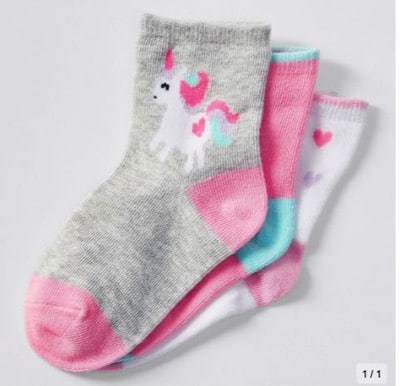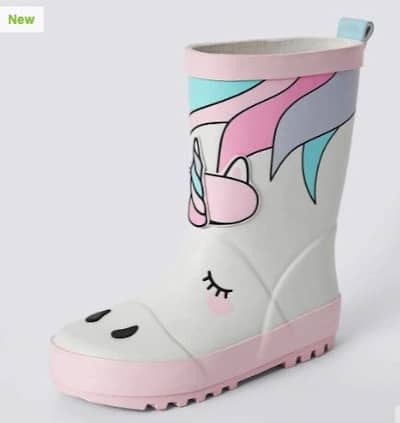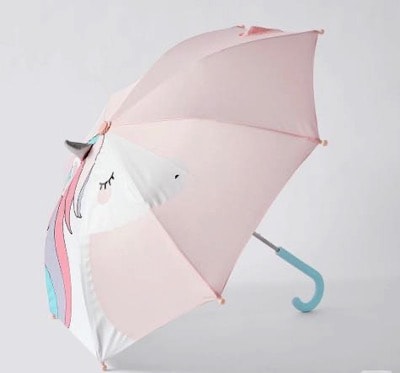If you’ve visited the girls’ section of a chain store recently you’ll have noticed that unicorns are in this season. These 2020 unicorns are a particular type of unicorn — coloured in soft pastel colours and with their eyes closed. It’s not just unicorns with their eyes closed this year — all the cute animals seem to be sleeping. Below are three of the products available at Target Australia this season:
There is quite a bit of commentary around this, as in, is this an example of retrograde feminism? Over at Think or Blue, Catherine makes the following point about the sleepiness of modern cartoon characters marketed at girls:
Over the course of history, women and girls, especially women and girls of color, have been told to relax. Don’t be hysterical. Anger isn’t flattering. Stop being so over-emotional.
We expect girls to sit nicely, behave, smile, and speak politely. As if that weren’t enough, we now expect them to sleepwalk; go about life in a dreamy daze.
Pair this article with this week’s episode (42) of the Fuckbois of Literature podcast: “Too Much: How Victorian Constraints Still Bind Women Today” and with the entire corpus of feminist literature and the sleepiness of these femme coded unicorns does feel a bit icky. Why are we still hung up on unironic “Sleeping Beauty” narratives, with the implication that girls are waiting around for things to happen to them?
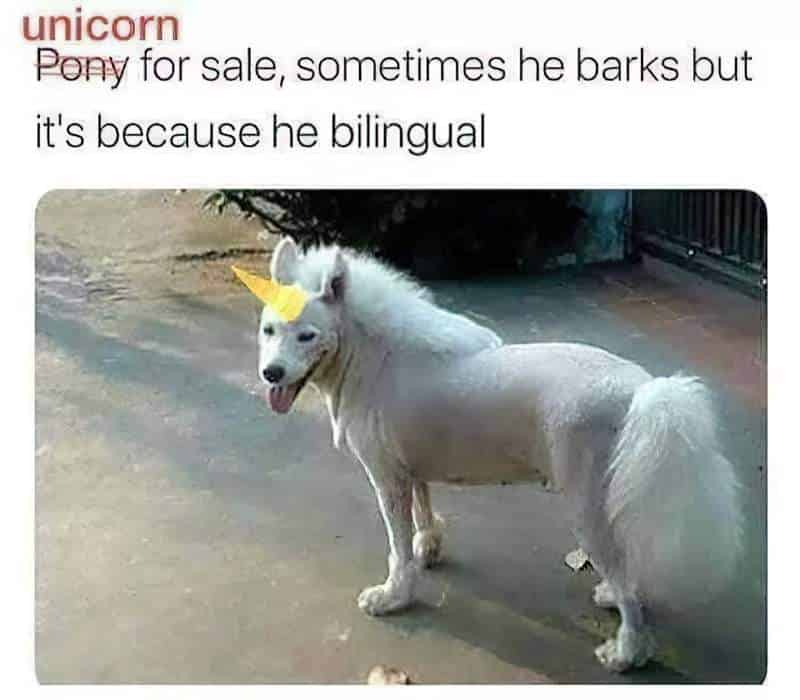
Though this is not necessarily a defence of all the sleeping characters marketed at girls, I believe the closed eyes are an aesthetic from UwU culture. The exonym for this is ‘soft culture’. This article from The Guardian asks if this so-called ‘Soft Girl’ version of femininity is a form of empowerment (a word I am beginning to despise).
The impulse to dismiss the soft girl as silly may overlook the deeply felt vulnerability of girlhood, and the desire to reckon with it on one’s own terms. In 2015, the author Lucy Ellman described teenage girls as living “in terror of the society in which they find themselves … their main aim is to reach adulthood without being raped, shot, manhandled, or murdered.” It’s a dark statement, but not an inaccurate one. Teen girls are often discredited and exploited for being pretty and eager to please others, characteristics dominant culture pressures them to have. Girls are disproportionately penalized by school attire policies, body-shamed, and blamed for “inviting” sexual harassment, which most begin experiencing at about 14.
The Guardian
If you’ve spent much time around adolescent girls, you’ll be familiar with the phenomenon in which girls (not all girls, but many) revert to faux-babytalk for a brief period, as a way of coping with the terrors of adolescence. I noticed while teaching in a girls’ high school that some teachers responded by talking back in this way, thereby encouraging it, while other teachers had no patience for it at all. However it’s treated, the vast majority of girls grow out of it within months.
I have wondered how many boys feel similarly vulnerable and toddler-like at adolescence, because in a patriarchal culture young men are denied any form of vulnerable expression. I welcome softboi as a subculture for this very reason. If I am prepared to embrace soft, UwU culture for boys, I must therefore embrace it as an option for girls.
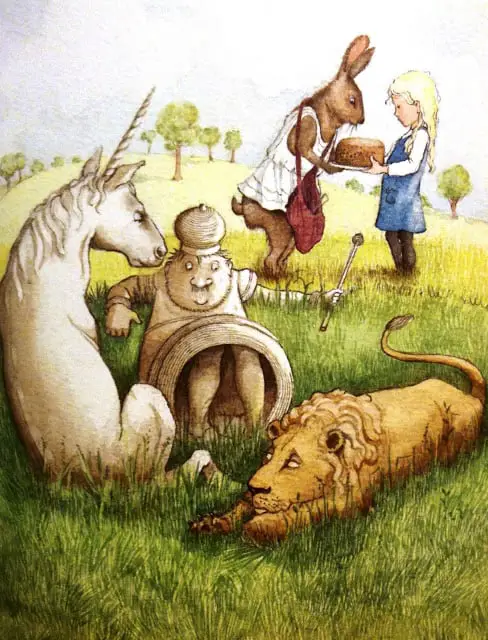
WHAT IS UWU CULTURE?
The first thing to say about UwU culture is that it started out as an emoticon. Perhaps influenced by complicated orthography and early uptake of mobile phones, younger Japanese demographics have complicated emoticons. (Typing in Japanese itself requires quite complicated key combos — complicated emoticons aren’t exactly a big step up from there.) The UwU looks to the manga-initiated like two closed eyes and an excited upturned mouth.
When is this emoticon used in conversation? This emoticon can indicate happiness, a compliment received, or faux smugness. It doesn’t actually mean the character is asleep. A quick look at my most used emoticons shows me that I use the Western, Apple equivalent quite a bit: 😊. This is technically called ‘smiling face with smiling eyes‘. Importantly, the eyes are mean to be read as ‘smiling’, not blanking out the world. In Japan, these characters tend to be surrounded by brackets and they can get really quite complicated and numerous, and each have their own specific context, just like the many, many Japanese mimetic words and onomatopoeia:
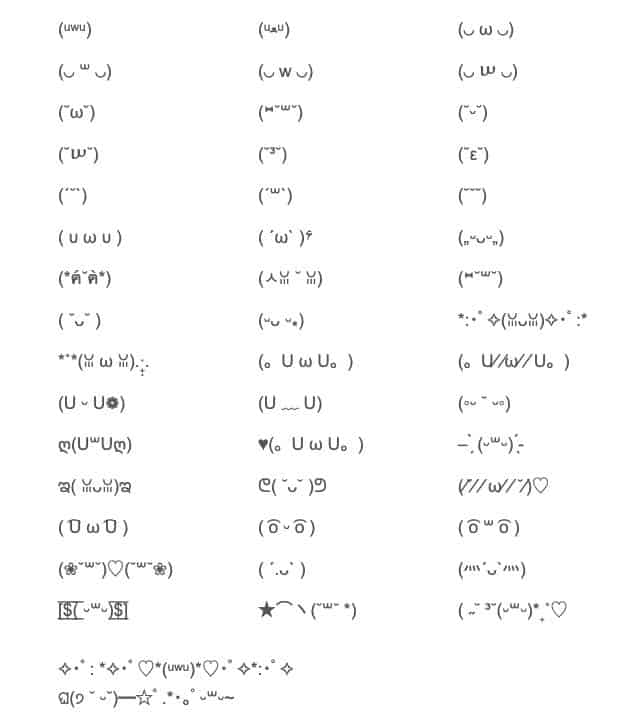
Furry culture has embraced UwU as an aesthetic. When fleshed out into a cartoon character, the UwU-derived creatures all look a bit like this, and of course these are purchased for little girls and this is why Target and K-Mart are full of stuff like this right now, even in Western countries:
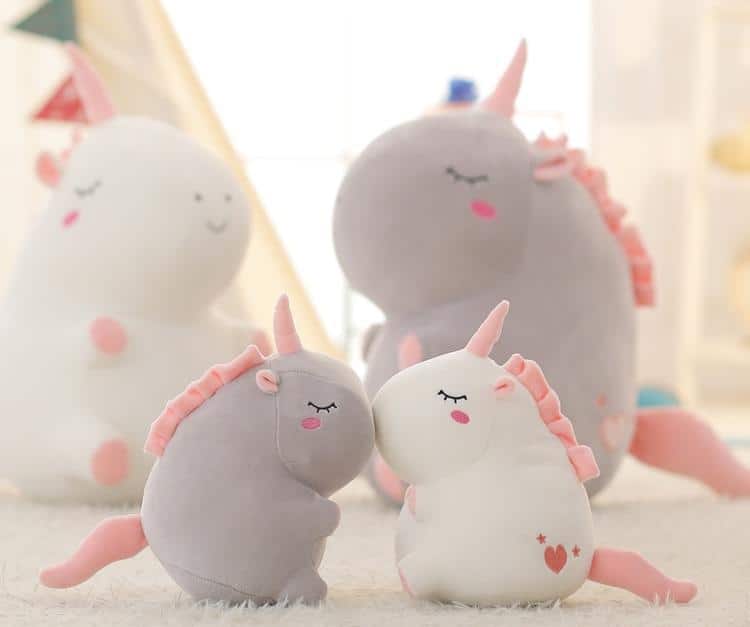
And because UwU is related to kawaii, which is related to girls and girl culture, of course it doesn’t get much respect as an aesthetic. Stuff for girls never garners respect. But it’s not just little girls embracing this culture.
A subculture of trans lesbians are right into ‘uwu’ — a subculture within a subculture within a subculture. In Natalie Wynn’s latest Contrapoints video (NSFW) she talks about internalised shame, and briefly (at about the 34 minute mark) she interrogates her own dismissive attitude towards other trans lesbians and their love of UwU:
Not all of my shame came from external bigotry. Some of it came from my disgust at things I saw trans lesbians doing like this anime cat girl shit which clearly gets under my skin and not just because these people have been harassing me for three years. You see it all over Reddit, this queasy combination of the hyper-sexual and the infantile… Here’s the 97th picture of my own thighs in stripy socks, uwu! What is that about? Is this how women act? Cis people are gonna see this! They aren’t gonna let us into women’s spaces if we act like that! … At my worst, I would sit there telling another trans person, “Why are trans lesbians SO cringey?”
Natalie Wynn
So I’ve worked out exactly why Target is full of sleepy unicorns this season, but does knowing the genealogy of subcultures improve this icon as an aesthetic for modern girls?
Girls of the 80s like me were presented with a different kind of unicorn. They at least had their eyes open. My Little Pony was big. These ponies went off on their own adventures. I wasn’t really into horses and unicorns myself as a kid, but many girls were, and many probably got there via horse culture. Interestingly, horse books started off as books for boys, and only later became ‘a girl thing’, and therefore read much less frequently by boys.
So I wondered, might the classical unicorn really be considered ‘better’ for girls?
Let’s go way back. First I wondered if Greek myth has anything to say about unicorns. Nope. Well, sort of:
Unicorns are not found in Greek mythology, but rather in the accounts of natural history, for Greek writers of natural history were convinced of the reality of unicorns, which they believed lived in India, a distant and fabulous realm for them.
Wikipedia
(My own daughter asked me when she was 3 or 4 if unicorns were real or if they were made up. There are so many weird things in the real world, this is a fair question.)
The Greeks were talking about the Pegasus (in Greek mythology it had no horn).
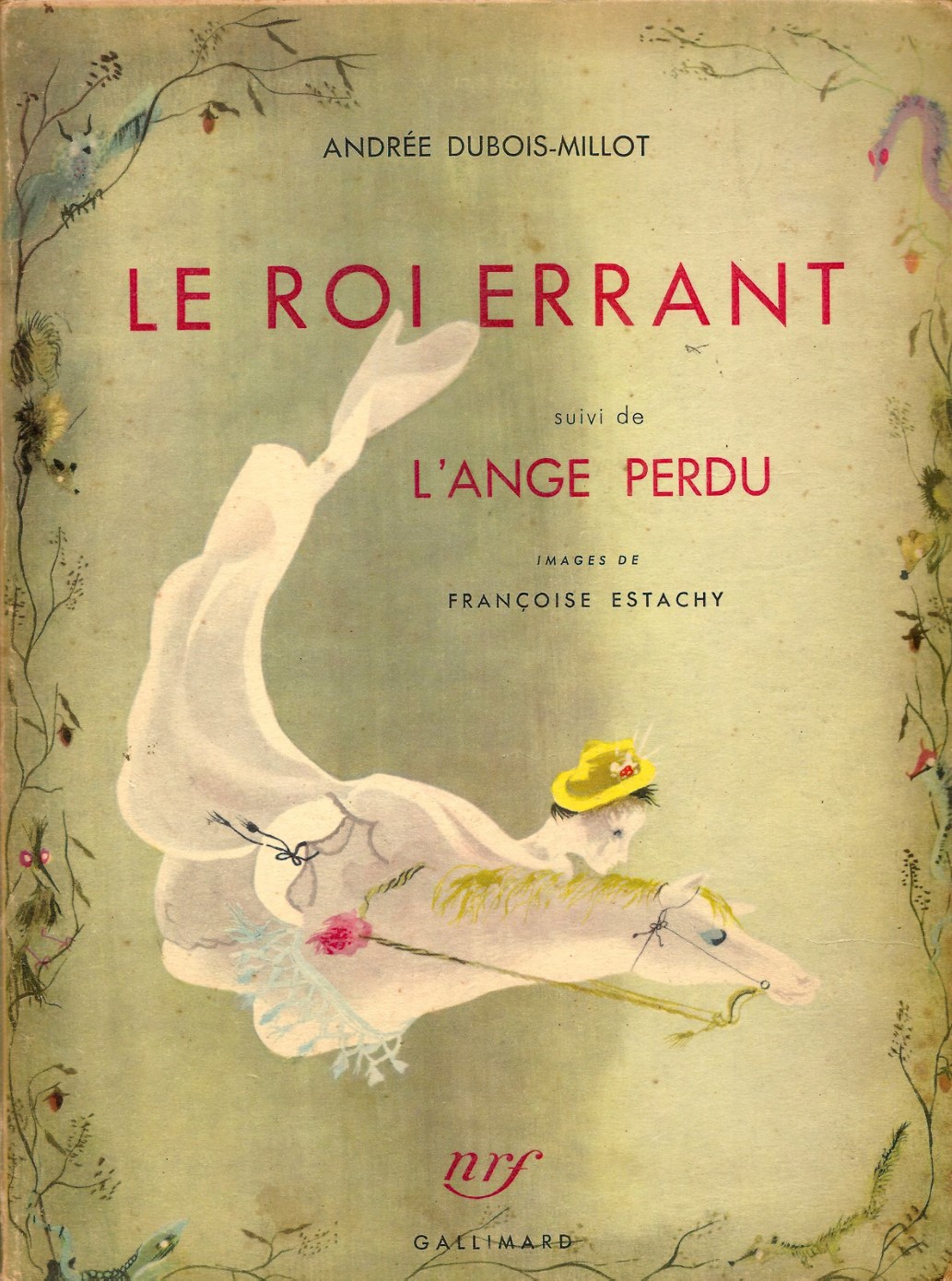
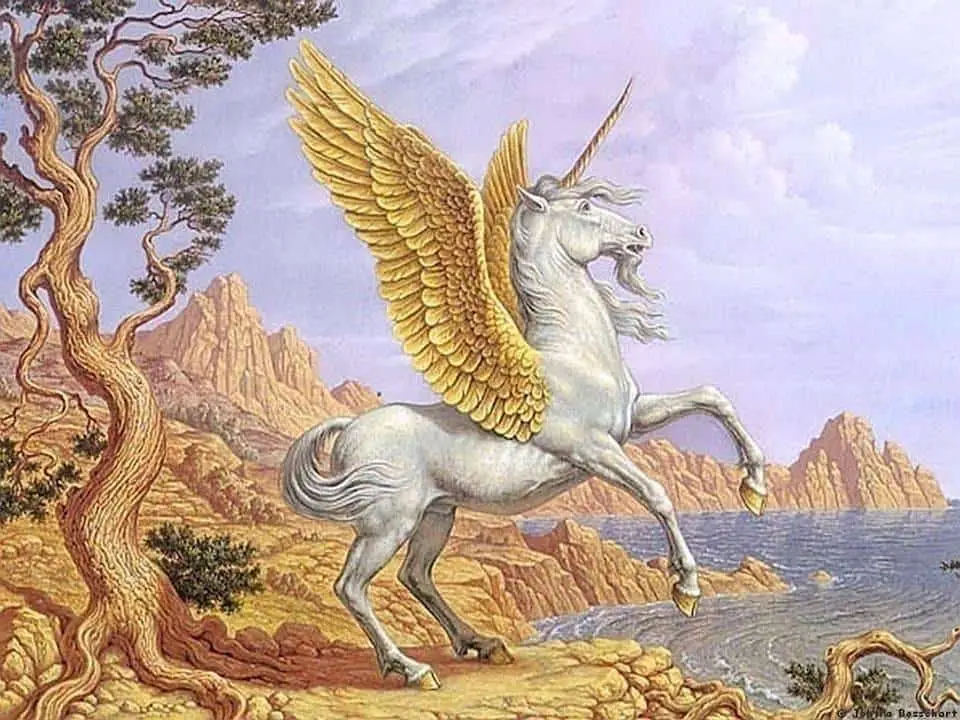
East Asia had the qilin (in China), known as the kirin in Japan (which these days is the word for ‘giraffe’ and also a popular brand of beer). When Chinese people first saw giraffes they thought these must be mythical creatures.
There is a fearful symmetry about these classical unicorns. The phrase ‘fearful symmetry’ comes from a poem by William Blake, in which he describes a tyger. Fearful symmetry is used today to describe a creature (or anything) which provokes both awe and terror. The creature is beautiful in a symmetrical kind of way (one condition of classic notions of beauty). These classical unicorns were pretty far from today’s UwU version.
Let’s go next to the Bible. As in Greek mythology, unicorns in the bible were considered real animals, not imaginary creatures. This post is written by someone who believes a single-horned horse creature existed in Biblical times. This is not such a stretch considering both horses and horned creatures exist in the world today. The Biblical unicorn may have been a now extinct giant rhino, for instance.
All of these ancient ‘unicorns’ were ferocious in some way. The Chinese qilin did have thick eyelashes, which is interesting when comparing to modern cute culture, but if you’ve ever seen a giraffe up close, they do have quite striking eyelashes, so that’s where that probably came from. In contrast to their pretty lashes and grace, giraffes can be unexpectedly ferocious creatures. A few years ago, one male giraffe mauled another newly acquired giraffe to death at our local zoo. This happened overnight and was not widely reported.
Although men usually get the glorious gigs in myth stories, taming the inherently ferocious unicorn is a traditionally feminine role throughout mythology. But trying to tame a unicorn is a bit of a fool’s errand.
Even centaurs may be domesticated with some difficulty, but Unicorns resist — they are always unattainable, unique, a distant flash of white among the trees, a vision of a firebird that can never be caught.
Margaret Blount, Animal Land
Taming a unicorn is generally impossible. A classic example of the mysterious unicorn can be found in The Little White Horse (1946). The unicorn appears mysteriously and vanishes like a dream: ‘For one flashing moment she saw him perfectly, clear cut as a cameo against the darkness, and the proud curve of the neck, the flowing white mane and tail, the flash of the silver hoofs were utterly strange and yet utterly familiar.’
Contemporary unicorn stories make use of unicorns in any way the story requires: As solemn, noble mysterious creatures; as fierce creatures (but always with fearful symmetry); as cute, relatable characters or even satirically, not dissimilar to the horse in BoJack Horseman.
The Unicorn from Through The Looking Glass 1871
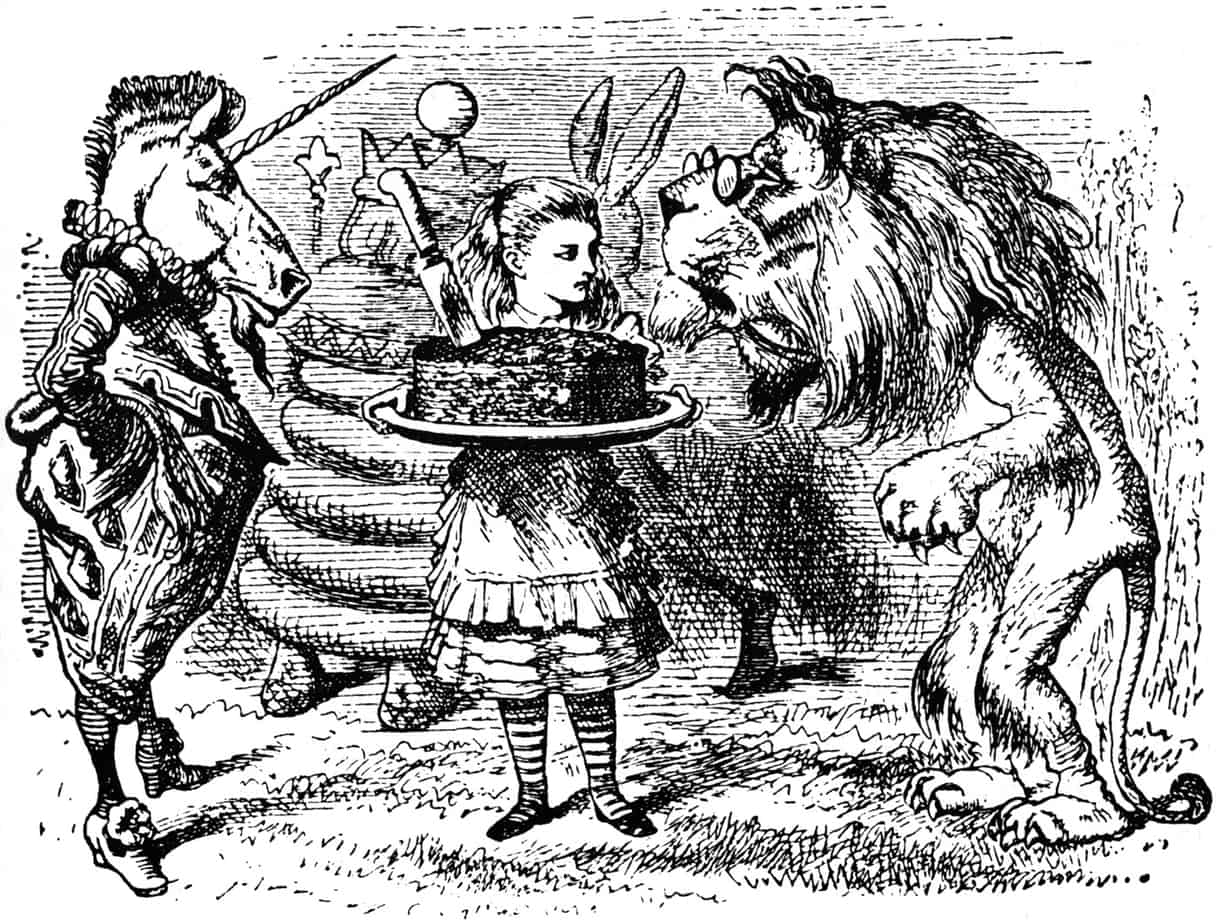
Alice’s unicorn is regal but more worldly than Lewis’s. The unicorn has the air of a bored dandy. (This may be due to Tenniel’s illustrations.)
The Lion and The Unicorn From A Nursery Rhyme Picture Book 1913
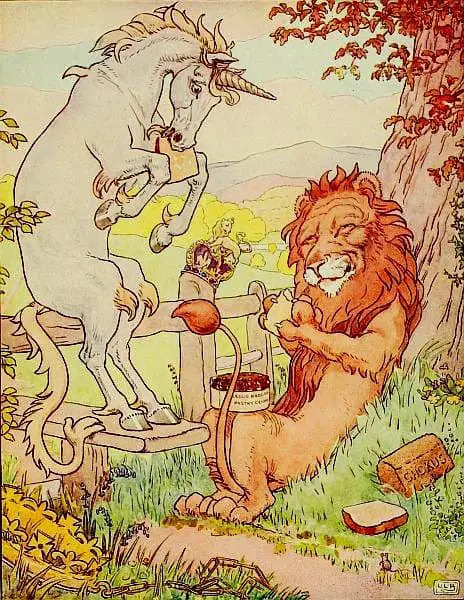
The lion stands for England and the unicorn for Scotland. The combination therefore dates back to the 1603 accession of James I of England who was already James VI of Scotland.
The Witch In The Wood 1939
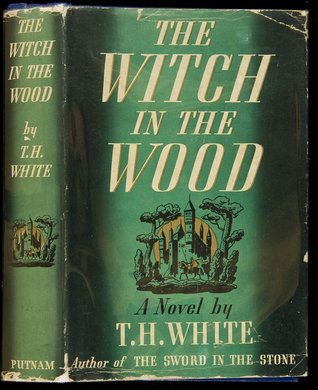
The second in a series called The Once And Future King. Gawaine and his brothers trap a unicorn with the help of a kitchenmaid. The unicorn dies a violent death and the boys hate themselves for it.
The Little White Horse 1946
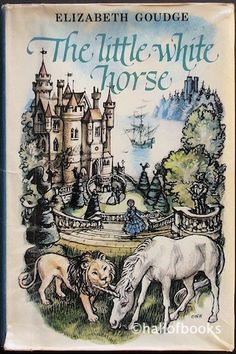
Set in 1842, a recently orphaned teenage girl is sent to the manor house of her cousin and guardian in the West Country of England.
The Last Battle by C.S. Lewis 1956
The Unicorn Jewel is Tirian the king’s dearest friend. Jewel is given the great affirmative Credo at the end when all the redeemed characters have passed into heaven.
Elidor by Alan Garner 1965
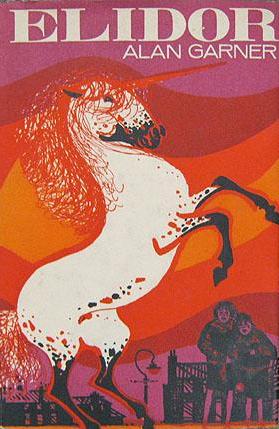
The terrors in this book are not only psychological but tangible.
There’s a strong Arthur Machen flavour.
The Birthday Unicorn by Janice Elliott 1970
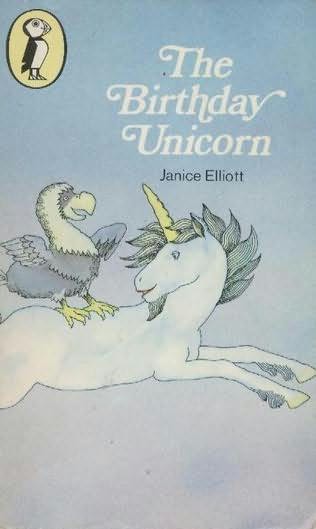
Though not evident by the cover, this is political comedy, much like The Animals’ Conference (by Erich Kastner, Walter Trier and translated by Zita de Schauensee based on an idea by Jella Lepman 1949) and reads like an animated cartoon. Life is easy for the unicorn because it is beautiful. The Dodo is jealous of the unicorn’s success. Toads are politicians. A precursor to We Bare Bears.
Into The Land of the Unicorns by Bruce Coville 1994
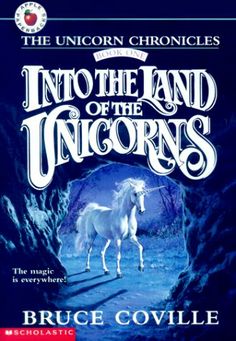
A popular series which had a 2018 re-release
The Last Unicorn 1968
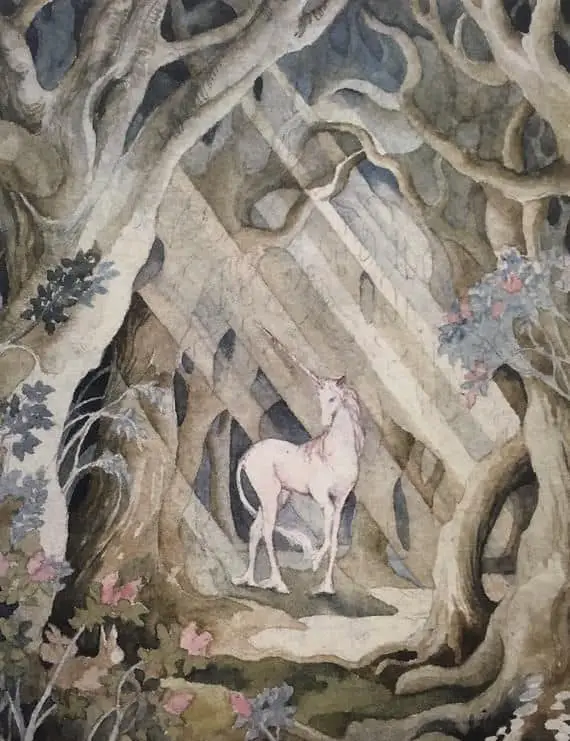
The unicorn lived in a lilac wood, and she lived all alone. She was very old, though she did not know it, and she was no longer the careless colour of the sea foam, but rather the colour of snow falling on a moonlit night. But her eyes were still clear and unwearied, and she still moved like a shadow on the sea.
Peter S. Beagle, opening passage to The Last Unicorn
By the time the film adaptation came along in the 1980s, it had become conventional to denote ‘Beauty’ (the feminine kind) via long eye-lashes.
Unicorns Are Jerks by Theo Nicole Lorenz 2016
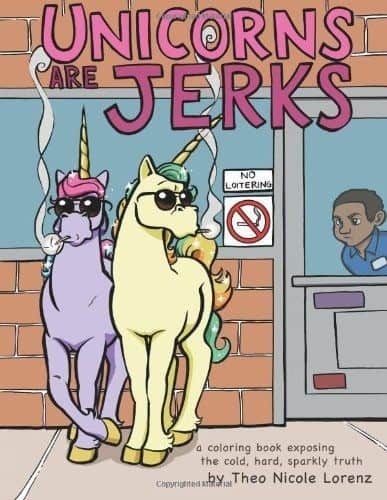
A book at the intersection of solemn unicorn culture, satire culture and colouring book culture.
Uni the Unicorn by Amy Krouse Rosenthal 2018
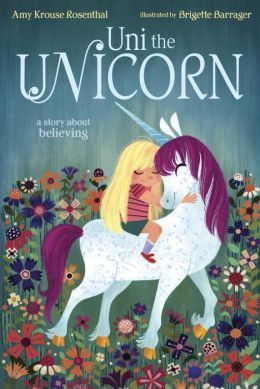
Marking the 2018 comeback of the solemn middle grade unicorn, this book contains the message that magic is real, so long as you believe in it.
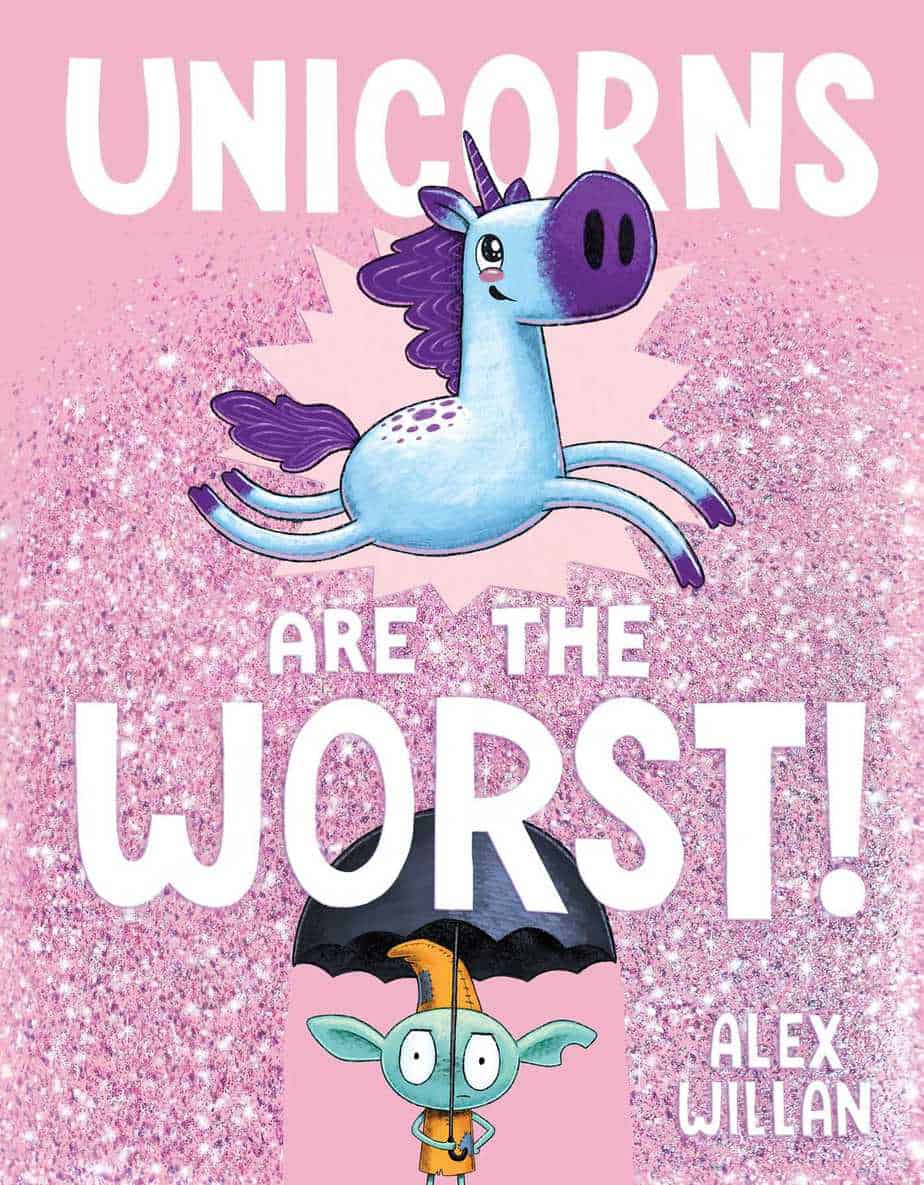
A grumpy goblin gets to know his new unicorn neighbors.
It’s an undeniable fact that unicorns are the worst!
Magic is serious business, but all unicorns do is frolic around, have tea parties, and leave glitter all over the place! They’re nothing like goblins—practical and hard-working, who can put magic to good use! Unicorns aren’t helpful at all.
Or are they?
No matter the mythical creature, whether we’re talking about sirens, witches or unicorns, if a creature is associated with femininity, popular culture eventually, at some point in her evolution, strips her of all ferocity.
The other thing that happens in this journey from ferocious to cute is sexual objectification. Think of all the sexy sirens in classical paintings and sexy witches on modern TV.
The unicorn is an especially interesting example of mythical disempowerment because unlike the sexy witch, or the sexy siren, the cuteness of the unicorn EQUALS her sexiness. In furry culture, cuteness cannot be separated from sexiness, because in the UwU subcultures Natalie Wynn talks about, as seen on Reddit and Tumblr, cuteness IS sexy.
When in the hands of little girls, I doubt these cute chainstore UwU characters are loved because they seem sexy. But overall, across history, the constant, unavoidable conflation with youthful femininity and sexual objectification is problematic. For reasons Natalie Wynn gets into — in great detail — passivity as a form of sexuality feels more problematic than the apparent sleepiness of this year’s chainstore unicorns.
FOR FURTHER INVESTIGATION
Talk for Writing Home-school Booklet: The Ultimate Guide To Unicorns and Flying Horses by Pie Corbett
